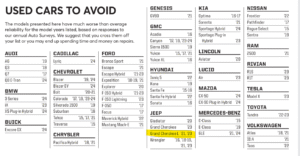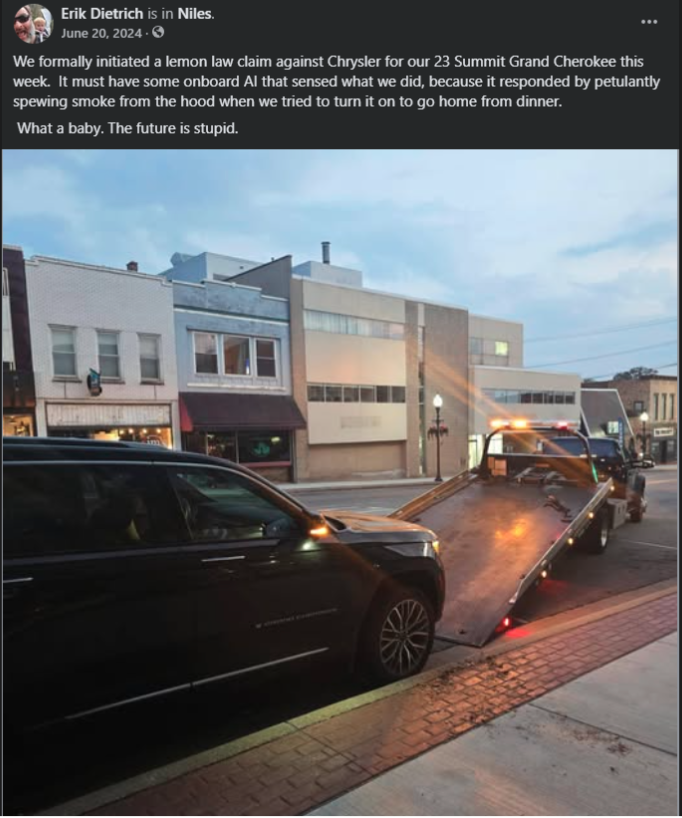The Facadeware Problem, But, Also, Help Me Beat My Car to Death

Make no mistake. This is a shitpost.
But it’s also going to be more than a simple shit post. Let me explain.
- I’ve created an IndieGogo campaign to help us do what Stellantis should have done itself: take the dangerous car they sold me off the road and destroy it.
- I’m going to use this post as the start of a series of blog posts where I’ll describe the absolutely bonkers, completely unbelievable Odessey of owning a ’23 Grand Cherokee. But I’ll use those posts to also describe a bigger problem with technology that I’ve come to think of as “the facadeware problem.” And a Jeep Grand Cherokee with “lane assist” that sometimes slams on its own brakes for absolutely no reason is the poster child for the facadeware problem (which I’ll describe later in the post, and more in the series).
But let’s start with the shitpost and the IndieGoGo.
Our Latest Engine Fire
On July 9th, my wife took our 4-year-old to the pediatrician in our apparently normally functioning (that day) 2023 Jeep Grand Cherokee Summit Reserve. After leaving from his blood draw, lollipop in hand, they got into the car, she hit the start button, and both of them watched, bemused, as smoke started billowing from under the hood of the suddenly completely disabled car.
Boom, 0 to Jeep-nuts roasting on an open fire in the literal push of a button.
Amanda stayed calm though. This wasn’t her first rodeo. Far from it.
Our brand new, top-line trim Grand Cherokee has spent about 4 months in the shop since we bought it at the end of 2022, often completely disabled and non-functional in a variety of ways that defy belief. For those keeping score at home, our new car has spent about 13% of its existence being repaired. Heck, this wasn’t even the first time it lit itself on fire at startup and been towed for the same.
Here we are, in 2024, when the same, then 1.5-year-old, Jeep also self-immolated and turned our date night into a frantic scramble to get a tow, locate a cab, and get home to our son who was with a babysitter that graciously stayed until 11 PM. I’m coming to think of this routine mad dash as the “Jeep Scramble.” Maybe they can make a lightly singed one of those stupid Jeep ducks to commemorate it on our dashboard.
So, Amanda knew the deal. Get a ride to Enterprise, because that’s Jeep’s loaner company of record. Open probably our 12th or 13th case with Jeep Customer Care to get our 12th or 13th rental car and do the usual: get everything ready for tow, submit for rental reimbursement and start the ball rolling on the paperwork.
More than a week later, our lemon ’23 Grand Cherokee was still at the dealer lot to which it was towed that day. It was set to remain there, apparently, until August 8th, which is the soonest any Jeep dealership could even LOOK at it.




 Delegation as a Function of Org Chart
Delegation as a Function of Org Chart



